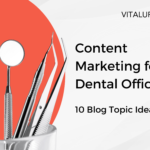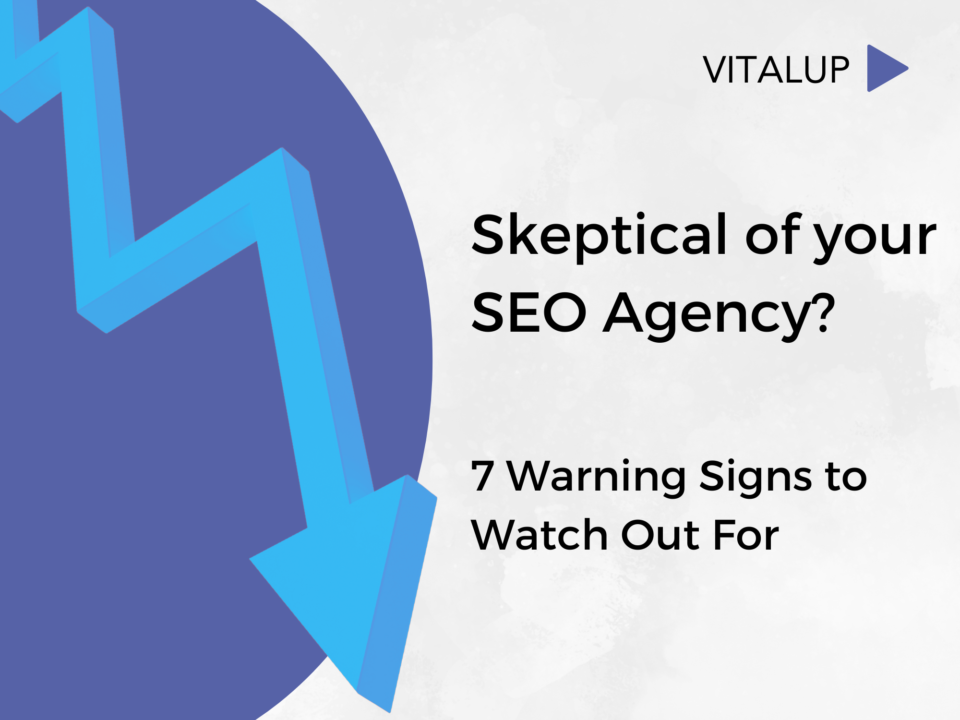
Fashion Website Design: 5 Color Combinations For Enhanced Ui/Ux
September 19, 2024
Content Marketing Ideas for Dental Blogs
September 20, 2024
Achieving high rankings on Google is a fundamental goal for any business seeking to drive organic traffic and build a robust online presence. However, understanding the nuances of Google's algorithm and how it seeks to satisfy user intent is crucial to success.
The search engine giant continuously updates its algorithms to prioritize content that best serves user needs, which means certain types of content can be more effective in gaining visibility. In this comprehensive guide, we'll explore five content formats that consistently perform well on Google, discuss why they are favored, and provide actionable tips for leveraging these formats to enhance your SEO strategy.

1. Blog Posts
Blog posts are the cornerstone of content marketing and SEO, and for good reason. They offer a versatile platform for addressing various topics and can be tailored to meet diverse user needs. Here’s why blog posts are so effective and how you can optimize them:
Why Blog Posts Rank Well
Word Count: Research shows that longer content tends to rank better on Google. A study by Backlinko found that the average content length of a top-ranking page is 1,890 words.
However, the optimal word count can vary depending on the query. For complex topics, aim for 1,500 to 2,500 words to cover the subject comprehensively. For straightforward queries, with a simple answer, a shorter, more focused posts can be equally effective.
Design: The structure of your blog post is crucial. Use headings and subheadings to break up content and make it scannable. Bullet points and numbered lists enhance readability, making it easier for both users and search engines to digest the information.
Backlinks/External Links: Building a network of internal and external links strengthens the context of your blog post. Internal links keep users engaged by directing them to related content on your site, while external links to reputable sources add credibility and authority.
Why Blog Posts Rank Well
● Keyword Research: Conduct thorough keyword research to identify terms and phrases relevant to your audience. Use tools like Google Keyword Planner or Ahrefs to find high-volume keywords and incorporate them naturally into your content.
● Engaging Headlines: Craft compelling headlines that capture attention and encourage clicks. A/B test different headlines to determine which resonates most with your audience.
● Visuals and Media: Enhance your blog posts with images, videos, and infographics. Visual content not only makes posts more engaging but also helps explain complex concepts.
2. How-To Guides
How-to guides are invaluable for users seeking specific solutions or step-by-step instructions. These guides address particular problems or tasks, making them highly relevant to users’ needs.
Why How-To Guides Rank Well
Targeted Intent: How-to guides directly address user queries with actionable solutions. By providing clear, step-by-step instructions, these guides meet the needs of users seeking practical advice.
Logical Structure: A well-organized guide follows a logical sequence, making it easy for users to follow along. This structure enhances user experience and readability.
Multimedia Integration: Incorporating videos, images, or infographics into how-to guides helps users better understand complex processes. Visual aids can significantly enhance the effectiveness of your guide.
Tips for Creating Effective How-To Guides
● Detailed Instructions: Provide comprehensive and easy-to-follow instructions. Include screenshots or videos where applicable to illustrate each step clearly.
● User Feedback: Encourage readers to leave comments or questions. Use this feedback to refine and improve your guide.
● Update Regularly: Ensure that your how-to guides are up-to-date with the latest information and trends. Regular updates keep your content relevant and useful.
3. Listicles
Listicles—articles structured as lists—are incredibly popular because they present information in a clear, digestible format. These types of content are easy to scan and provide quick answers to users’ queries.
Why Listicles Rank Well
User Engagement: Listicles cater to users who prefer quick, digestible information. Their structured format allows for easy scanning, keeping readers engaged.
Higher Time on Page: The structured nature of listicles encourages users to spend more time on the page. This increased engagement signals to Google that your content is valuable.
Shareability: Listicles are often shared on social media due to their engaging format. This increased sharing can lead to more backlinks and higher SEO performance.
Tips for Creating Effective Listicles
● Catchy Titles: Use engaging and descriptive titles to attract attention. Titles like “10 Best Tips for...” or “5 Essential Tools for...” are effective in capturing interest.
● Comprehensive Content: Ensure that each item on your list is thoroughly explained. Provide value in each point to keep readers interested.
● Visual Elements: Incorporate images or icons to enhance each list item. Visual elements make the content more engaging and easier to understand.
4. Infographics
Infographics are visual representations of information or data. They simplify complex topics and make them more accessible to users, which is why they perform well in search rankings.
Why Infographics Work
Visual Appeal: Infographics are visually engaging and can convey complex information in an easily digestible format. This visual appeal increases the likelihood of shares and backlinks.
Potential for Backlink Generation: Infographics are highly shareable and often lead to other websites linking back to your content. This can significantly boost your SEO.
SEO-Friendly: Properly optimized infographics, including descriptive alt text and relevant keywords, enhance their discoverability. Embedding them in well-optimized blog posts can further improve your SEO.
Tips for Creating Effective Infographics
● Clear and Concise: Ensure that your infographic is clear and focused. Avoid clutter and present information in a straightforward manner.
● High-Quality Design: Invest in professional design to create visually appealing infographics. High-quality graphics enhance credibility and engagement.
● Promote and Share: Share your infographics on social media and other platforms to increase visibility. Reach out to industry influencers or bloggers who might be interested in featuring your infographic.
5. Videos

Video content is increasingly important in SEO and user engagement. Videos can be used for various purposes, from tutorials to product reviews, and they are favored by both users and search engines.
Why Videos Rank Well
High Engagement: Videos keep users engaged and encourage them to spend more time on your site. The longer users stay on your page, the better the SEO signals.
Growing Popularity: Video content is rapidly gaining popularity, with platforms like YouTube experiencing significant growth. Videos cater to users who prefer visual and auditory learning.
Dual Exposure: Videos can rank on both Google and YouTube, providing dual opportunities for visibility and driving traffic to your site.
Tips for Creating Effective Videos
● Quality Content: Focus on producing high-quality, relevant videos. Ensure clear audio and video quality to maintain viewer engagement.
● Optimization: Optimize video titles, descriptions, and tags with relevant keywords. Include a compelling call-to-action to encourage viewers to visit your website.
● Promotion: Promote your videos across social media and embed them in your blog posts or landing pages. This increases visibility and encourages shares.
Conclusion
Incorporating various content formats into your marketing strategy can significantly enhance your website’s visibility and engagement. Blog posts, how-to guides, listicles, infographics, and videos each offer unique advantages and can cater to different user intents. By understanding and leveraging these formats effectively, you can improve your chances of ranking well on Google and driving more traffic to your site.
Remember to focus on producing high-quality content that aligns with user needs and preferences. Regularly update your content to keep it relevant and valuable. By doing so, you’ll not only boost your SEO but also build a stronger connection with your audience.


